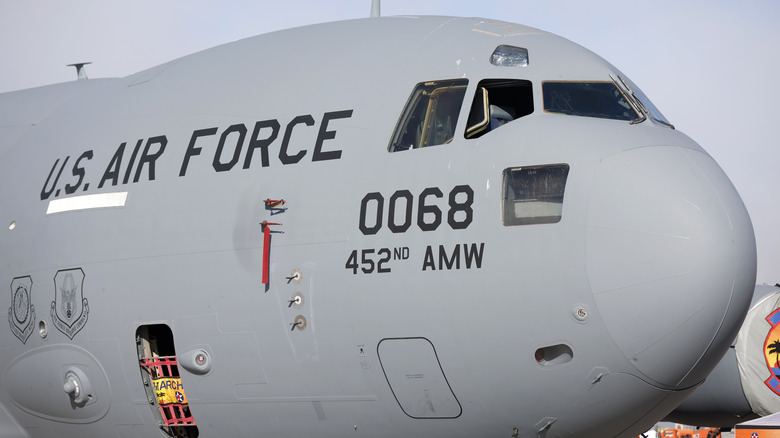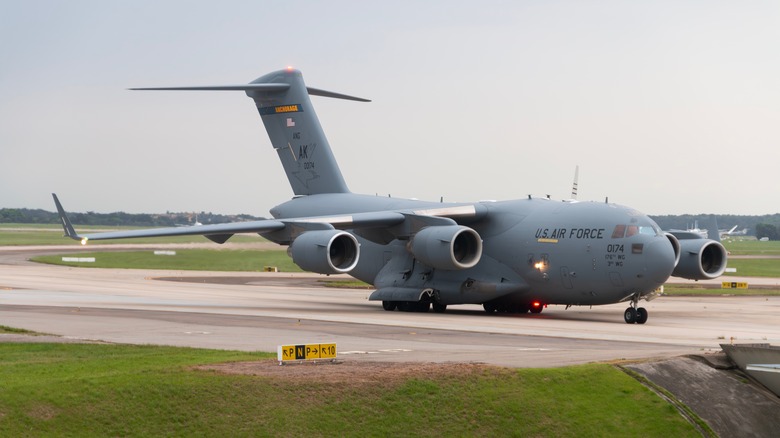Why Is C-17 Globemaster Called The 'Moose?' The History Behind The Name
People don't often appreciate just how big moose actually are. Seeing them in real life can be an absolute eye-opener, with footage and photographs really not doing these majestic creatures justice. At up to around six feet tall and weighing approximately 1,600 pounds (the largest polar bears are around 1,700 pounds, for comparison), they really are titans. You might think, then, that the C-17 Globemaster, which is lovingly referred to as the Moose, is named for its sheer size.
The C-17 West Coast Demo Team explained on Facebook, however, that the Globemaster has valves to relieve some pressure, which are used while the aircraft is being refueled on the runway. While they're active, they make a very loud, continuous sound, which, to those familiar with the aircraft, sounds like the bellowing of a moose. However, there's no denying that the Globemaster is quite the hefty machine.
It has a wingspan just shy of 170 feet, is 174 feet long, and weighs up to 585,000 pounds. It's a transport aircraft with ample room to carry 170,900 pounds of cargo or 102 troops as required. The primary virtue of the aircraft is that it can be customized to suit the needs of the mission and whatever it will be required to transport. To this end, it can be filled with different types of medical equipment and personnel. Being big, resilient, powerful, and extremely loud at times, it's a perfect candidate for the moose moniker.
The popular, hardworking moose
The shape of a certain plane, its reputation, or a different characteristic entirely can inspire an aircraft's nickname. For instance, it's easy to tell why the Boeing 757 is referred to as the Flying Pencil from a glance at its long and slender frame. The fact is, though, that aircraft nicknames can be very important, whatever the reasons for them. According to Task & Purpose, a pilot of the U.S. Air Force told the outlet that those charged with flying the Globemaster call themselves "the Moose Gang ... it's a cool uniter amongst aircrew." There's really no overestimating the importance of this sense of unity in any branch of the military.
With the Globemaster's long history of faithful service, anyone would take pride in being a member of the Moose Gang. The Globemaster family first entered service in 1995, with the 17th Airlift Squadron. The Air Force explains that one key to its flexibility is its cargo area, which "has rollers that can be flipped from a flat floor to accommodate wheeled or tracked vehicles [and] rollerized conveyers to accommodate palletized cargo." Its slats and the powerful lift of its wings also allow it to use runways that other airlift planes would be too large for.
While the C-17 Globemaster III was discontinued in 2015, its unique talents, such as transporting Main Battle Tanks, have left a void that has been difficult to fill since production ceased. At the Paris Air Show in June 2025, Boeing acknowledged that renewed international interest in the aircraft could, potentially, allow it to bring back the Globemaster. The Moose still serves the U.S. and other nations, but may return to production too.

